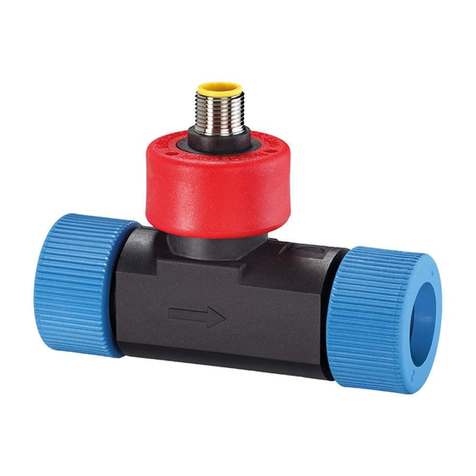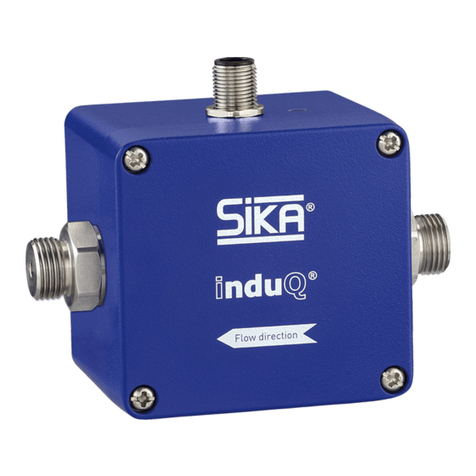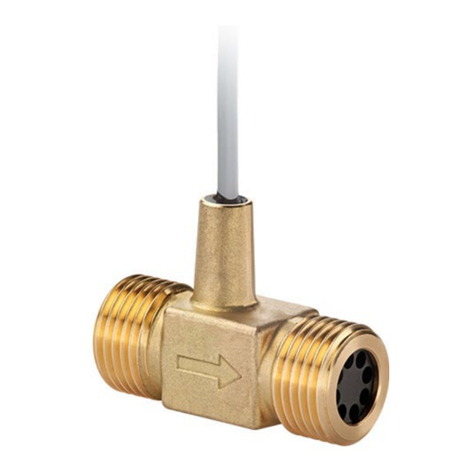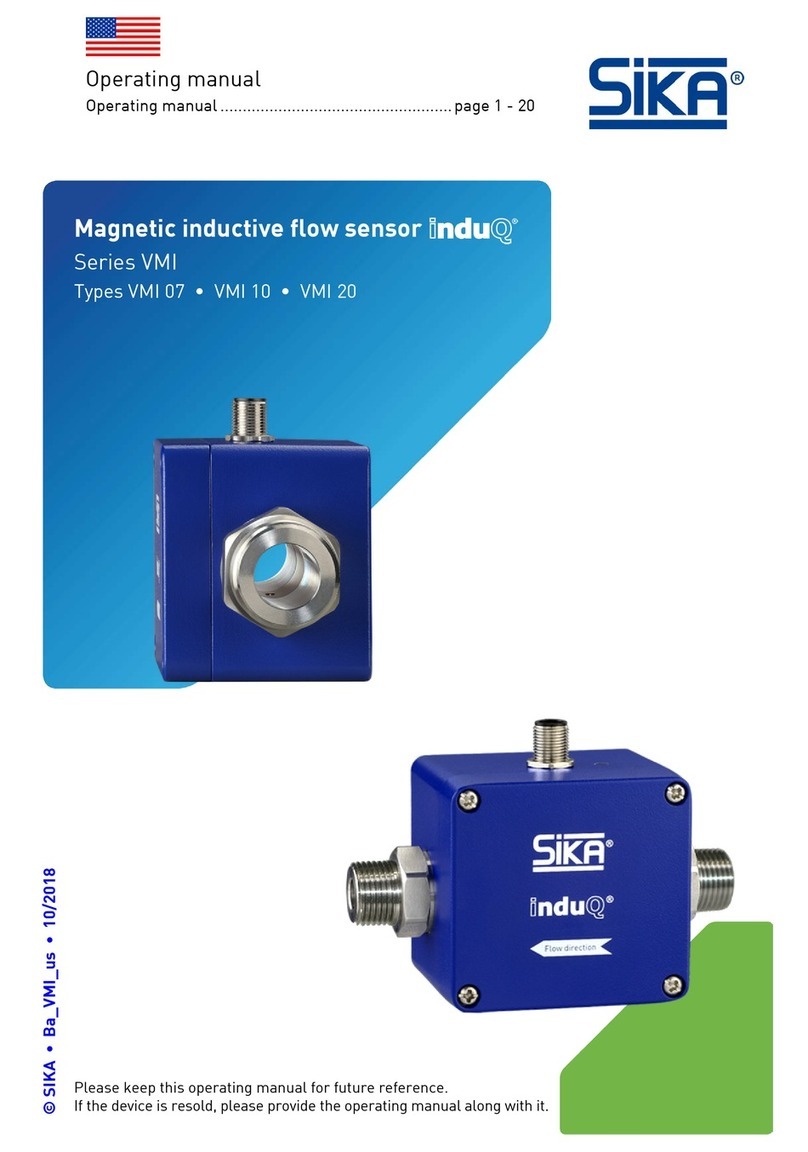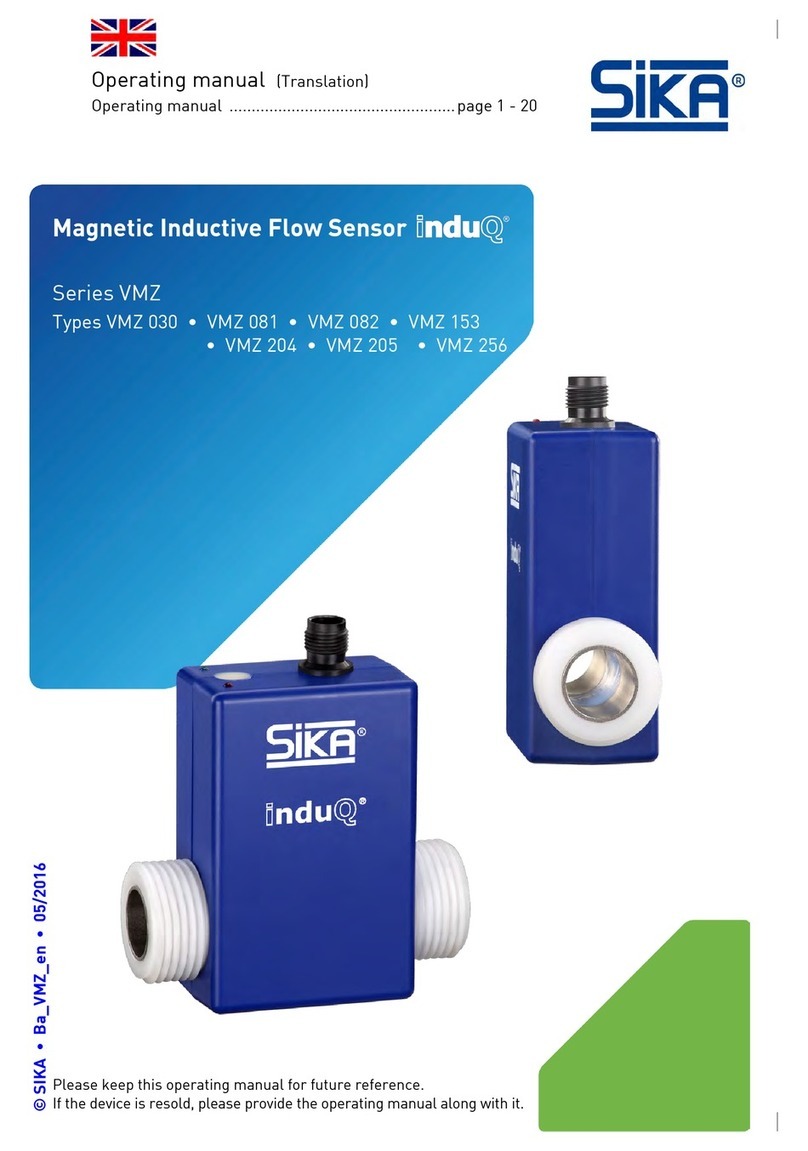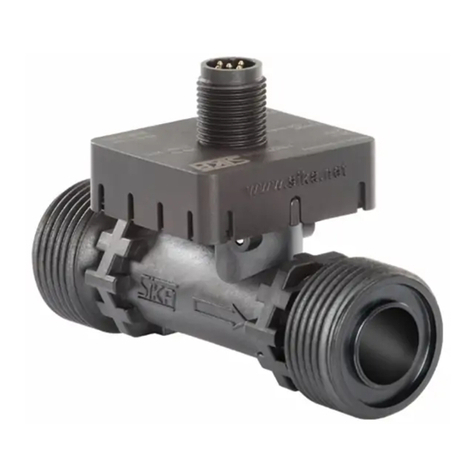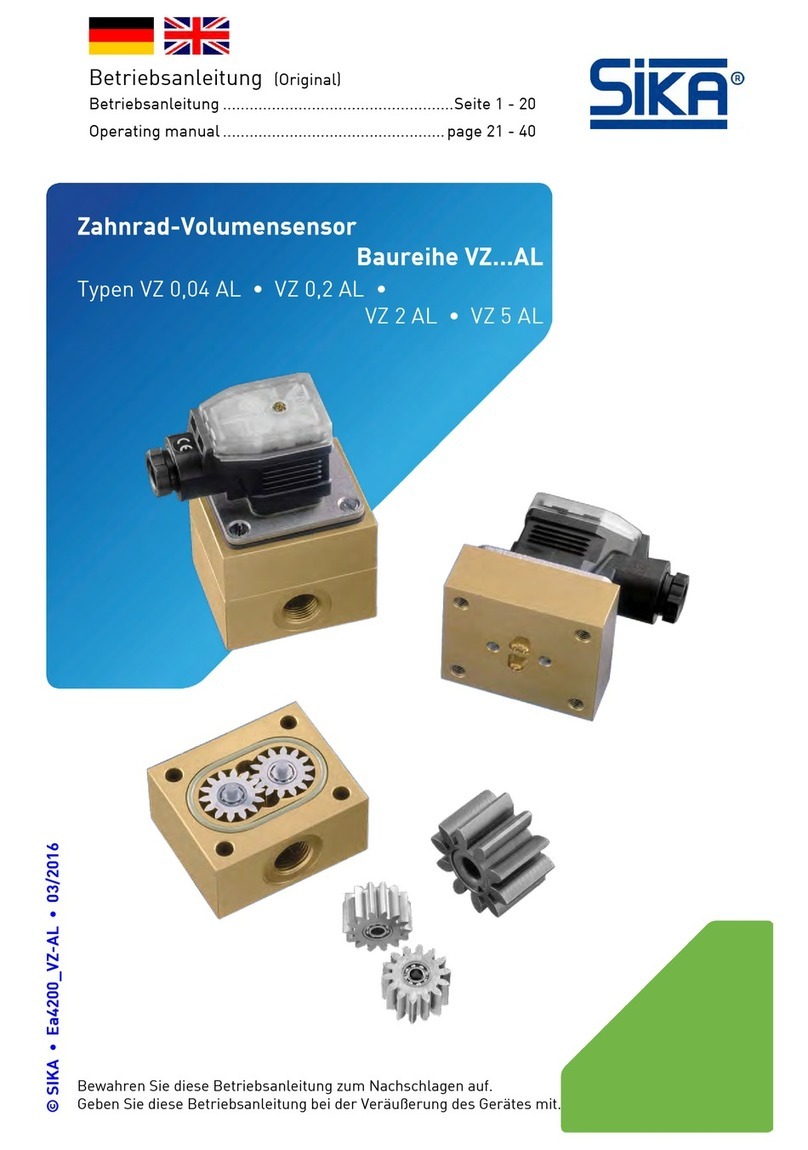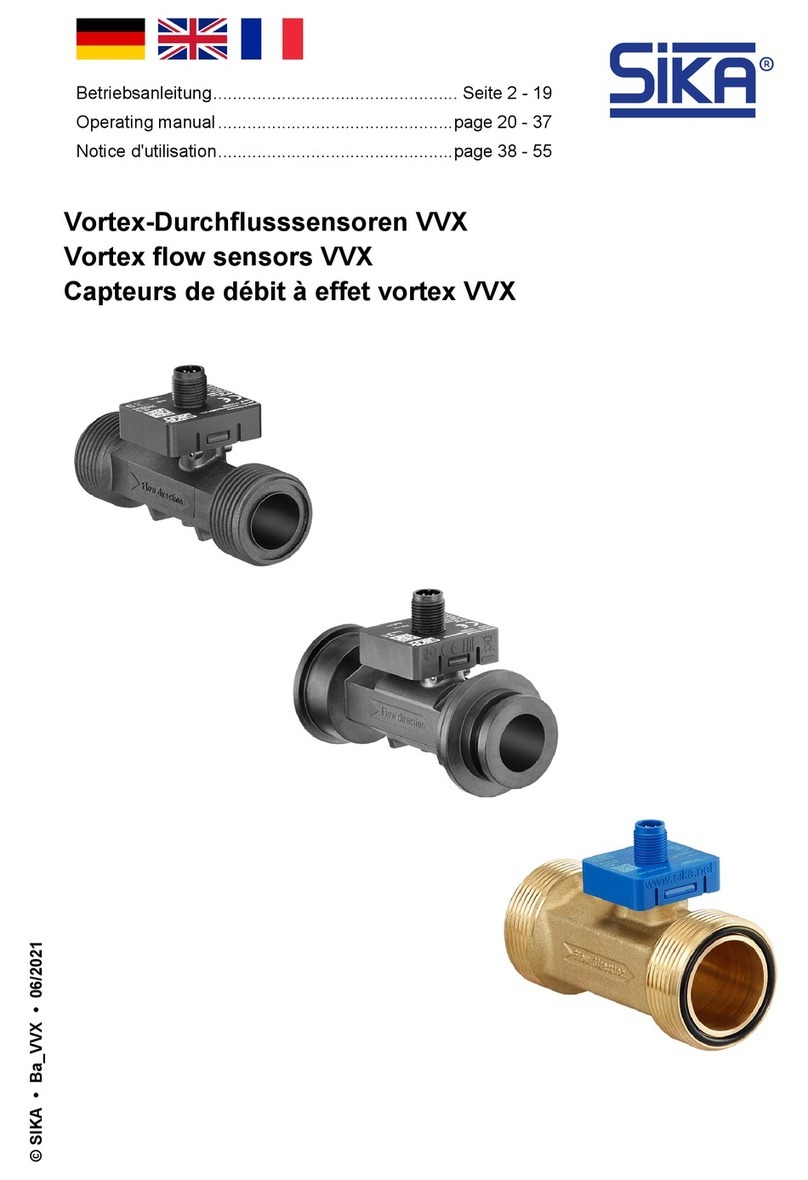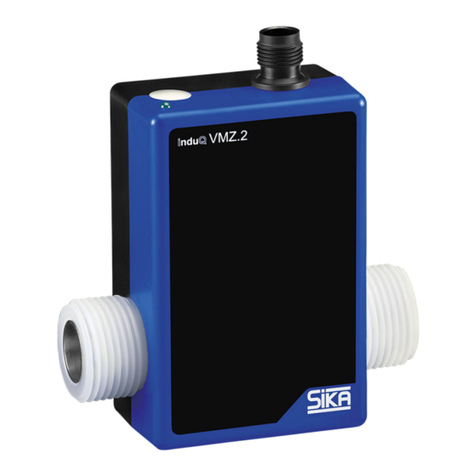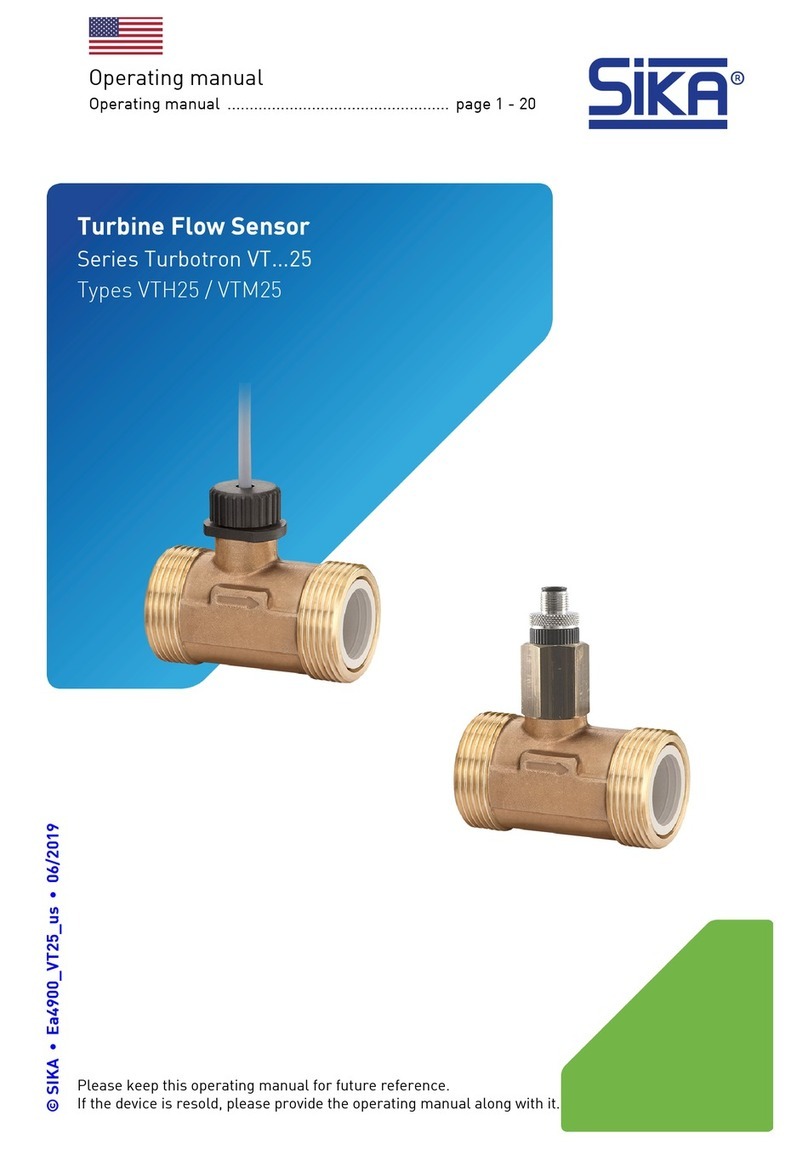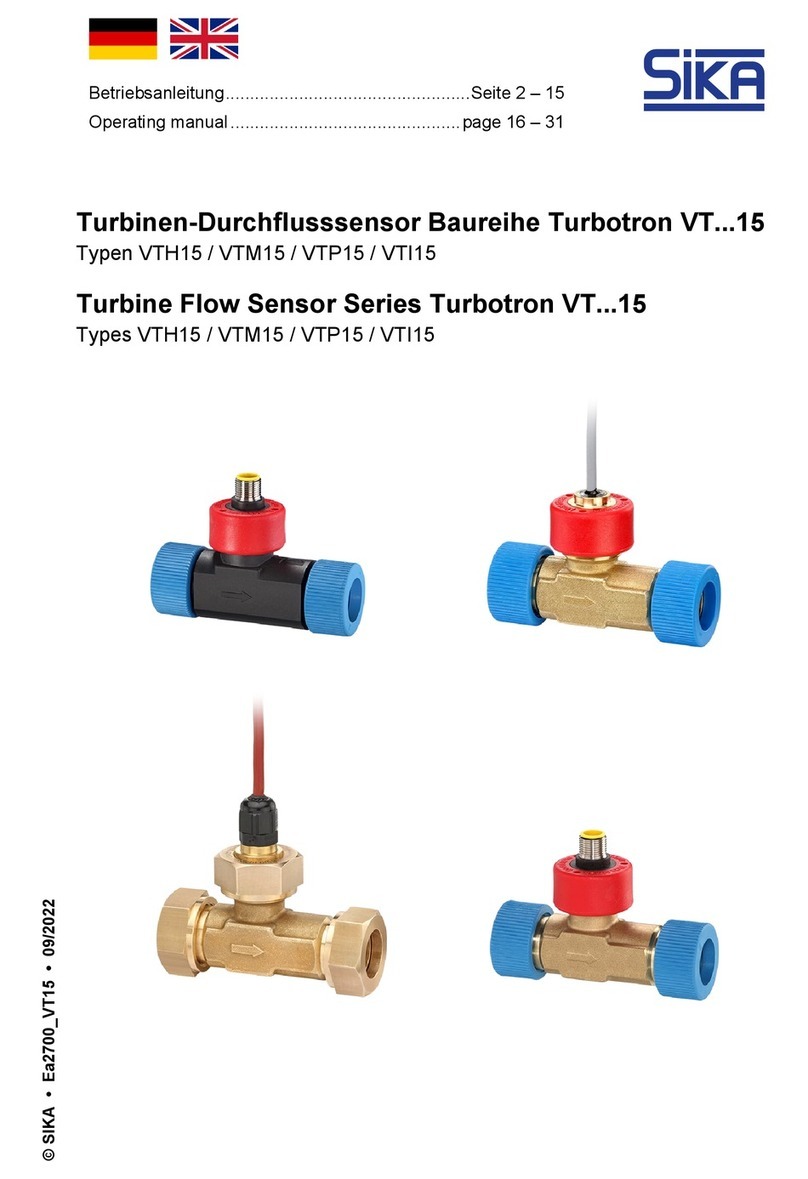
induQ®- Series VMM
- 2 - © SIKA •Ba_VMM_us •09/2018
Table of contents page
0About this operating manual.........................................................................................4
1Device description .........................................................................................................5
1.1 Delivery, unpacking and accessories .........................................................................6
1.2 Intended use................................................................................................................7
1.3 Exclusion of liability ....................................................................................................7
2Safety instructions.........................................................................................................8
3Construction and function.............................................................................................9
3.1 Construction................................................................................................................9
3.2 Measuring principle ..................................................................................................10
3.3 Functions...................................................................................................................10
4Installation of VMM......................................................................................................10
4.1 Installation instructions display electronics ............................................................11
4.2 Instructions on potential equalization and cathode protection................................12
4.2.1 Potential equalization ...........................................................................................12
4.2.2 Cathodic protectives .............................................................................................13
4.3 Sensor installation instructions................................................................................14
4.4 Mounting....................................................................................................................16
5Electrical connection...................................................................................................17
5.1 Mains and signal cable..............................................................................................17
5.2 Electrode and magnetic current line........................................................................19
6Commissioning............................................................................................................19
7Operation .....................................................................................................................21
7.1 Functional classes (main menu)...............................................................................24
7.1.1 Measured values...................................................................................................25
7.1.2 Password ..............................................................................................................27
7.1.3 Totalizer ................................................................................................................29
7.1.4 Measurement processing.....................................................................................30
7.1.5 Flow.......................................................................................................................31
7.1.6 Pulse output..........................................................................................................34
7.1.7 Status output.........................................................................................................36
7.1.8 Current output ......................................................................................................37
7.1.9 Simulation .............................................................................................................38
7.1.10 Self-test ................................................................................................................40
7.1.11 Settings Sensor.....................................................................................................42
8Errors and returns ......................................................................................................46
8.1 System errors............................................................................................................46
8.2 Self-test errors .........................................................................................................47
8.3 Return shipment to the manufacturer .....................................................................48
